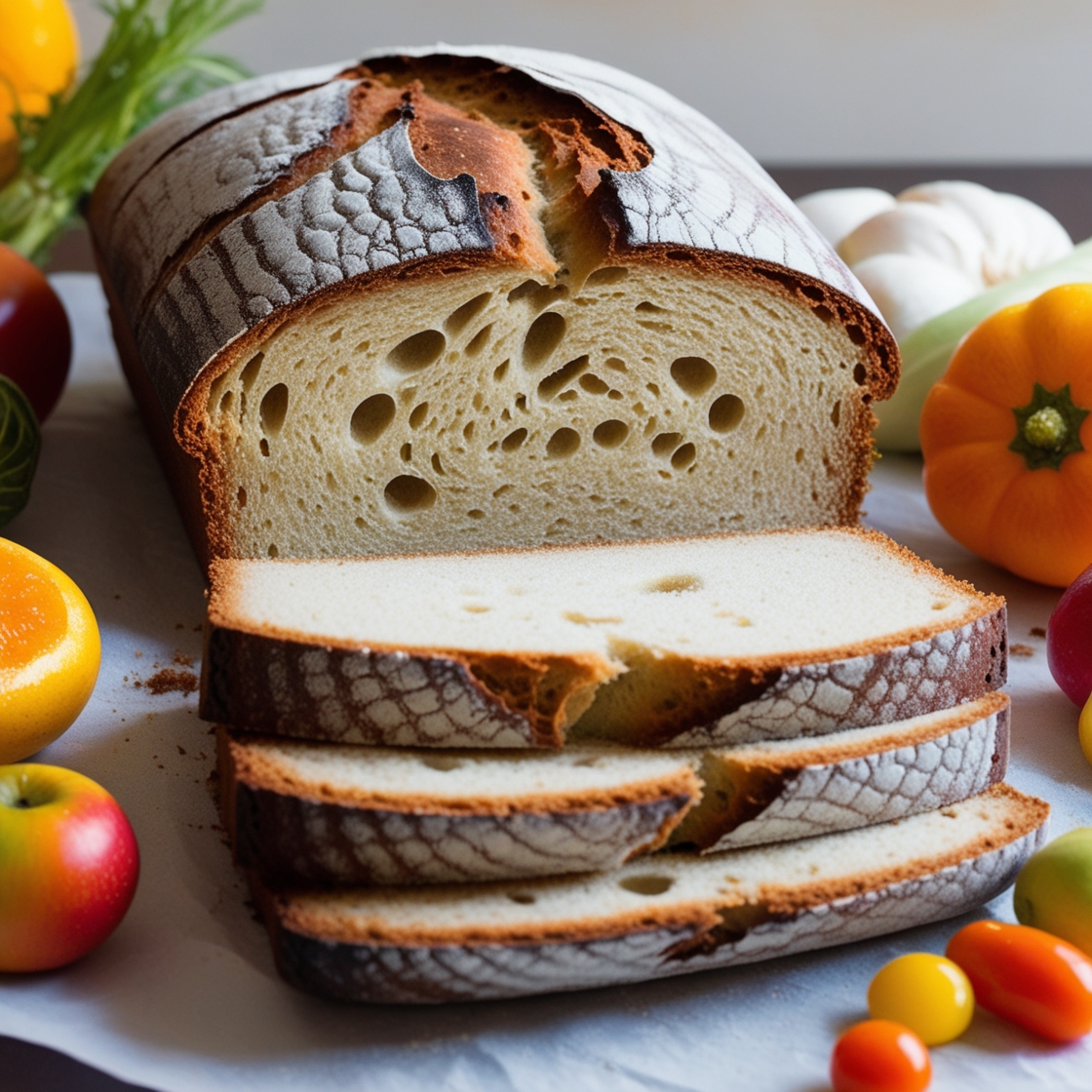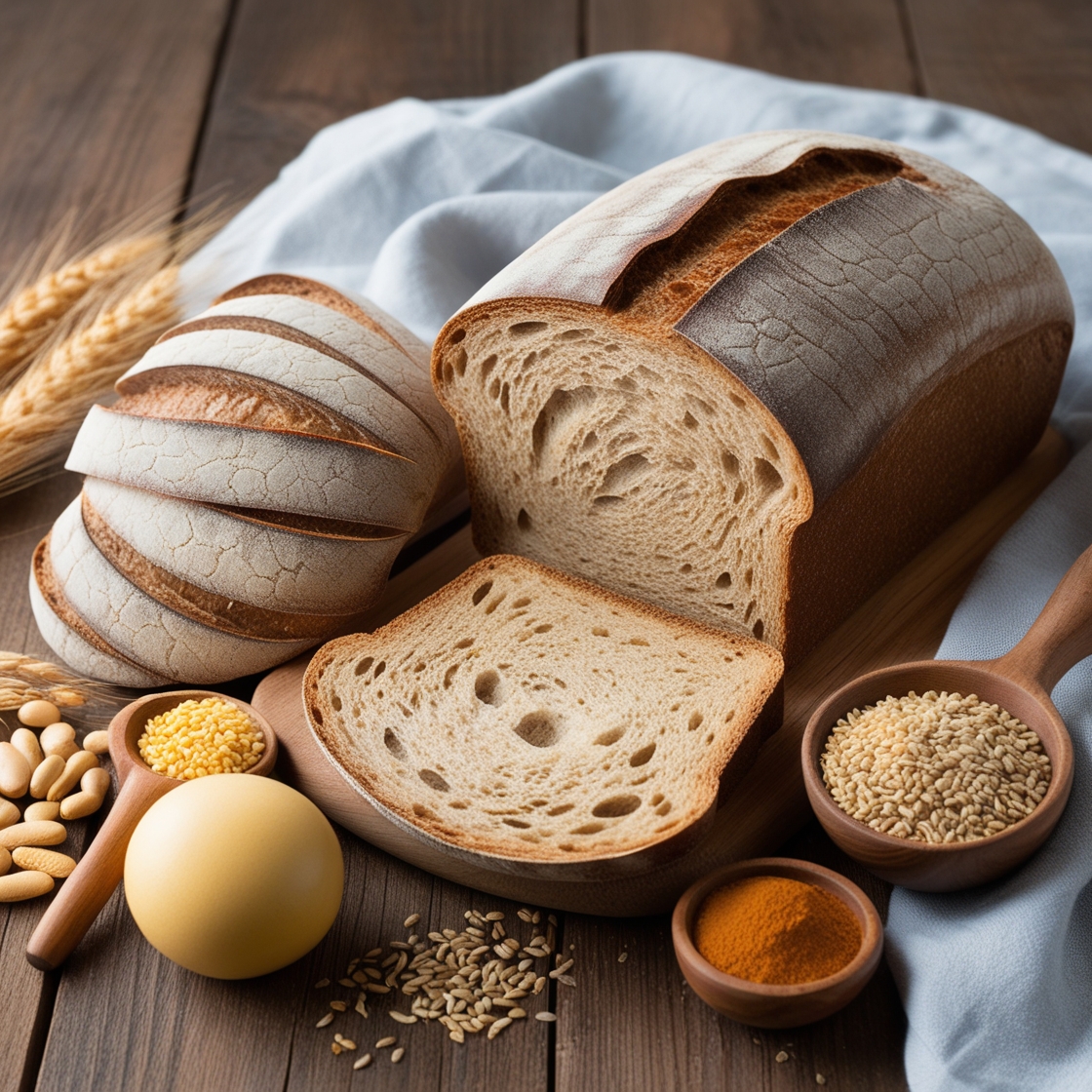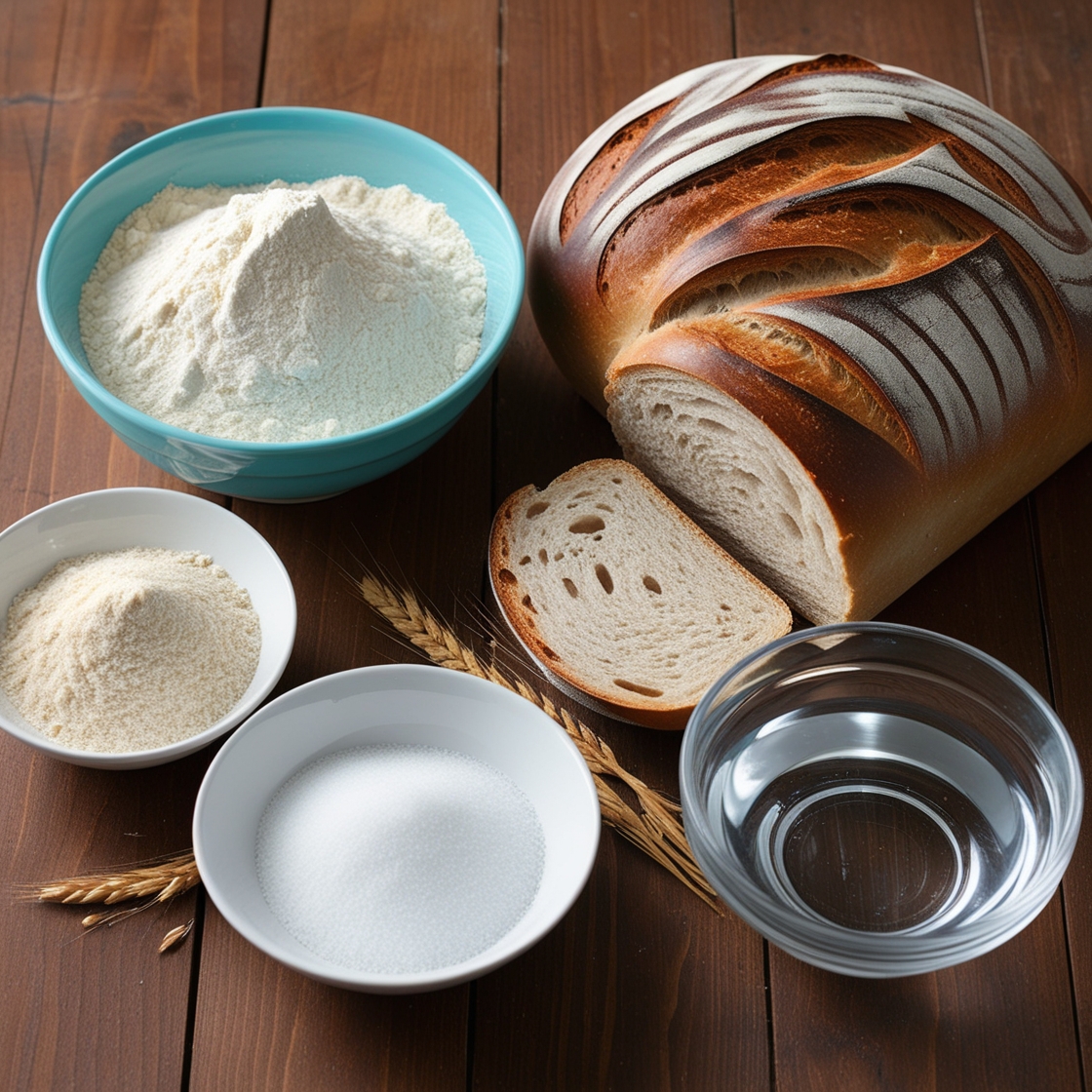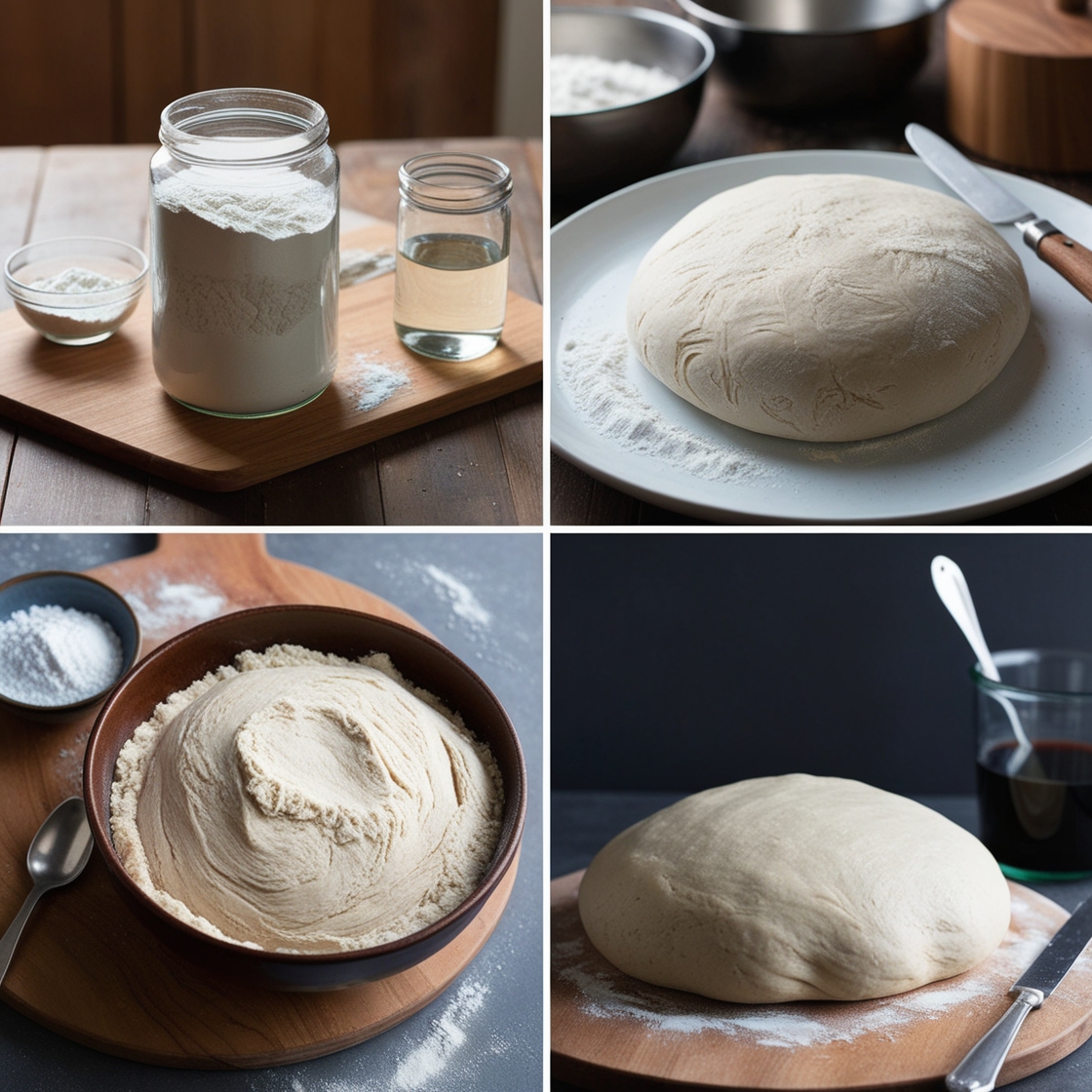Sourdough bread is one of the most classic and traditional types of bread, dating back thousands of years and loved around the world. Unlike regular bread, Sourdough bread is made from natural yeast, giving it a unique flavor, crispy crust and soft, smooth inside. The natural yeast in Sourdough bread not only enhances flavor but also provides many nutritional benefits, helping to support digestion and strengthen the immune system. Making Sourdough bread at home is an exciting experience and requires patience and meticulousness. From growing natural yeast, mixing dough, kneading dough to proofing and baking, every step contributes to the special flavor and perfect texture of bread. Cast iron pots, with good heat retention, are ideal tools for baking Sourdough bread, helping the bread rise evenly and have a delicious crispy crust. This article will guide you in detail how to make Sourdough bread at home, from preparing natural yeast, choosing ingredients, mixing flour, proofing the dough to baking in a cast iron pot. Besides, we will also answer frequently asked questions and share some tips to help you create delicious, nutritious and beautiful Sourdough bread. Let’s start your Sourdough bread making journey and enjoy the fun of making these wonderful breads yourself

Nutritional value:
Sourdough bread is not only attractive because of its taste but also because of its great nutritional values. Natural yeast helps break down gluten and create enzymes that are beneficial to the digestive system. Sourdough bread also has high levels of vitamins and minerals such as vitamin B, iron, zinc and magnesium, helping the body absorb nutrients better.
- Gluten and natural yeast: Natural fermentation process helps break down gluten, a protein that causes indigestion for some people. Thanks to that, Sourdough bread is easier to digest than bread made from industrial yeast.
- Enzymes and beneficial bacteria: Natural yeast contains many enzymes and beneficial bacteria, which help support the digestive system and strengthen the immune system. These enzymes help the body absorb nutrients from wheat flour more effectively.
- Nutritional content: Sourdough bread is rich in vitamin B, iron, zinc, magnesium and many other minerals. B vitamins help maintain energy, while iron and zinc are important elements for body growth and function.
- Low glycemic index: Sourdough bread has a lower glycemic index than bread made from industrial yeast, helping to control blood sugar levels and prevent diabetes.

Ingredient:
- Natural yeast (starter): Natural yeast is a mixture of flour and water, nurtured over several days to develop beneficial bacteria and yeast. You can make your own natural yeast at home or buy it from specialized bread stores.
- Wheat flour: You can use white flour or whole wheat flour, depending on your preference. Whole wheat flour will create bread that is richer in flavor and richer in nutrients.
- Water: Water is an important ingredient in the bread making process, helping to dissolve ingredients and activate yeast.
- Salt: Salt not only helps enhance flavor but also controls the fermentation process, preventing yeast from working too quickly.

Making:
Step 1: Prepare natural yeast
Natural yeast needs to be nurtured for at least 5-7 days before use. Every day, you need to add flour and water to maintain yeast activity.
- Day 1: Mix 50g flour and 50ml water in a clean glass jar. Cover loosely and leave at room temperature.
- Days 2-7: Every day, remove half of the yeast mixture and add 50g of new flour and 50ml of water. Stir well and continue to leave at room temperature.
Natural yeast will be ready when it has a slight sour smell, lots of air bubbles and doubles in size after each feeding.
Step 2: Mix the dough
- Combine ingredients: In a large bowl, mix natural yeast with water until combined. Add flour and salt, then use your hands or a dough machine to knead the dough until the mixture is uniform and not sticky.
- Kneading the dough: The kneading process can take about 10-15 minutes. You can use the “stretch and fold” kneading method to help the gluten develop without kneading for too long.
Step 3: Incubate the dough
- First proofing: Let the dough rest for 3-4 hours at room temperature, until the dough doubles in size. You can check by pressing your finger into the dough. If the dough swells slowly, it meets the requirements.
- Incubate overnight: Transfer the dough to the refrigerator and incubate overnight (about 12-24 hours). The cold proofing process helps develop better flavor and texture of the bread.
Step 4: Bake the cake
- Prepare the cast iron pot: Preheat the cast iron pot in the oven at 230°C for 30 minutes before baking. This helps the pot reach the necessary temperature for the bread to rise evenly and have a crispy crust.
- Transfer dough to pot: Remove dough from refrigerator and leave at room temperature for about 30 minutes. Transfer the dough to the heated cast iron pot, cover and bake for 20 minutes.
- Bake the cake: After 20 minutes, open the pot lid and continue baking for another 20-25 minutes until the crust is a beautiful golden color and the cake is evenly risen.

Frequently asked Questions:
1. Why does Sourdough bread taste sour?
- Sourdough’s characteristic sour flavor comes from the natural fermentation process of yeast, creating lactic acid and acetic acid. These acids not only help create flavor but also preserve bread longer.
2. How do you know if natural yeast is ready to use?
- Natural yeast will float to the surface of the water when you try dropping a little in the water. This is a sign that the yeast is strong enough to use. In addition, natural yeast is ready when there are many air bubbles, a slight sour smell and doubles in size after each feeding.
3. Can white flour be replaced with whole wheat flour?
- Yes, but you need to adjust the amount of water because whole wheat flour absorbs more water. Add about 10-20ml of water when using whole wheat flour to achieve the required moisture.
4. Why doesn’t my bread rise as expected?
- There are many reasons that can lead to bread not rising as expected. First, natural yeast may not be strong enough. You also need to make sure the dough is allowed to rise for enough time and the oven temperature is high enough. In addition, improper kneading of dough can also affect the rise of the cake.
Tips:
- Use a cast iron pot: Cast iron pots help retain heat well and create an ideal environment for the bread to rise evenly and have a crispy crust. Make sure the cast iron pot is preheated before grilling for best results.
- Be patient with the dough proofing process: Long dough proofing time helps develop better flavor and structure of the bread. Don’t rush, give the dough enough time to ferment and develop.
- Preserve natural yeast: If you don’t bake regularly, you can store yeast in the refrigerator and only need to re-raise it once a week. When preparing to use again, feed the yeast a few times to reactivate the bacteria and yeast.
- Experiment with different types of flour: You can experiment with different types of flour such as barley flour, oatmeal, or wholemeal flour to create breads with different flavors and textures.

Making Sourdough bread at home is not just a cooking process, but also a journey to discover and enjoy the magic of natural yeast and artisanal baking techniques. From nurturing natural yeast, patiently fermenting dough, to taking care of every little detail in the baking process, all require meticulousness and passion. Sourdough bread, with its mildly sour flavor, crispy crust and soft, smooth inside, is not only a delicious dish but also brings many nutritional benefits, supporting the digestive system and enhancing health. For those who love to bake at home, creating the perfect Sourdough bread by hand is a meaningful and satisfying experience. Through every step of preparing and baking, you will feel joy and satisfaction when you see the fruits of your labor – delicious, nutritious and beautiful bread. Moreover, making Sourdough bread also helps you connect with ancient baking traditions, gain a deeper understanding of the natural fermentation process and celebrate the nutritional values of artisanal bread. Hopefully with the detailed instructions and tips in this article, you will have enough knowledge and inspiration to start your journey of making Sourdough bread at home. Be patient, practice and be creative, you will find that making Sourdough bread is not as difficult as you imagine but on the contrary, full of fun and worth a try.
